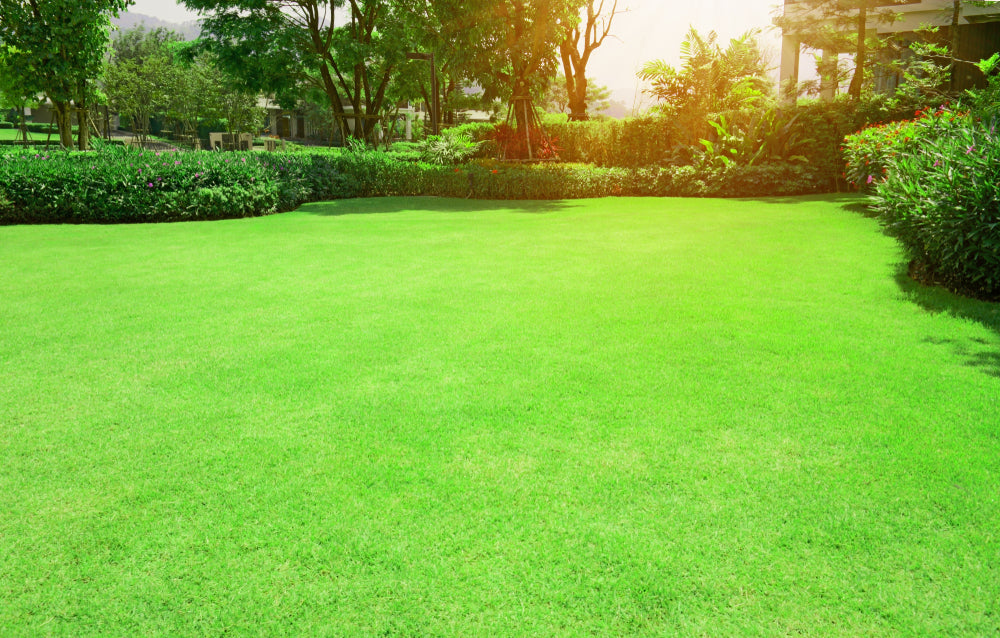
7 Tips for Reviving Your Lawn After Winter
As the cold months are nearing their end and homeowners are looking forward to spring, it's time to start thinking about how to revive your lawn after winter.
Many think that a post-winter lawn is a lost cause after months of being buried under snow and ice. Thankfully, there are practical steps you can take to help your property look vibrant and green once more.
1: Clear Any Winter Debris from the Yard
Once the weather starts warming, look for any winter debris like fallen branches in your yard. Take a minute to clear these objects from your lawn so you can mow your grass during the springtime without any interruptions.
Leaves and other organic materials can also hinder new growth in the spring. Make sure to rake up any remaining leaves before they have a chance to decompose.
2: Plant New Seed Over Any Bare Patches in Your Lawn
Snow, ice, and the accompanying cold temperatures can create bald patches on your lawn. As the weather trends upward, start planting new grass seed over these areas as soon as you are able to. Be sure to use a high-quality seed mixture suited for your climate and soil type.
3: Start Mowing on High Settings
During the winter, grass growth is stunted, meaning you will likely have a relatively short lawn when spring arrives. Avoid mowing your lawn on a low setting at the start of the warmer months to prevent exposing the root system.
4: Use a High-Quality Fertilizer
One of the most essential steps for reviving a lawn after winter is to use high-quality fertilizer during the spring. This will help your grass grow healthy and green during the warmer months.
Be sure that you're using a fertilizer with enough nitrogen, potassium, and phosphorus to ensure that your grass receives as many essential nutrients as possible. If you're using a liquid fertilizer solution, make sure to water your lawn for at least an hour after applying it.
Your lawn's first fertilizer application should be applied in early spring. If your grass is slow to grow after this initial treatment, add another round of fertilizer later in the season.
Organic fertilizer can also be used to revive a lawn after winter. It is important to note that organic options may take longer to produce results than synthetic ones. However, they do not damage the environment and are preferred for the long-term health of your grass.
5: Water at the Right Times of Day
Watering your lawn at the proper times of day can make an immense impact on the health of your lawn during the early spring. Plan to water in the morning or evening when the sun isn't as harsh. This will help prevent scorching and dehydration.
Additionally, avoid watering your lawn during periods of rainfall - you may end up overwatering, which can disrupt healthy growth.
6: Eliminate Weeds Early On
Weeds can quickly take over a lawn that is struggling to revive after winter. Address any weed problems as early on in the season as possible using an appropriate herbicide.
If weeds are not addressed, they can stunt new grass growth and cause your lawn to look patchy. Weeds can also become more difficult to get rid of once they have had time to take root and grow.
7: Use Lawn Paint for a Greener-Looking Yard
Using lawn paint is a convenient and effective option for reviving your post-winter lawn if you want your grass to start looking greener faster. Lawn paint can be mixed with water and sprayed onto healthy grass, brown patches, and bare spots - creating a more uniform appearance for your yard.
Revive Your Lawn with Solarogen Lawn Paint Today
At Solarogen, we strive to equip homeowners with the highest-quality, nontoxic lawn paint on the market. Whether you are looking to spot-treat a brown patch of grass or want to cover your entire property, Solarfast™ Lawn Paint can be used with any lawn sprayer to provide a more vibrant appearance without damaging the environment.
To learn more, check out our Solarfast™ Lawn Paint here or contact us online anytime for more information about our products.






